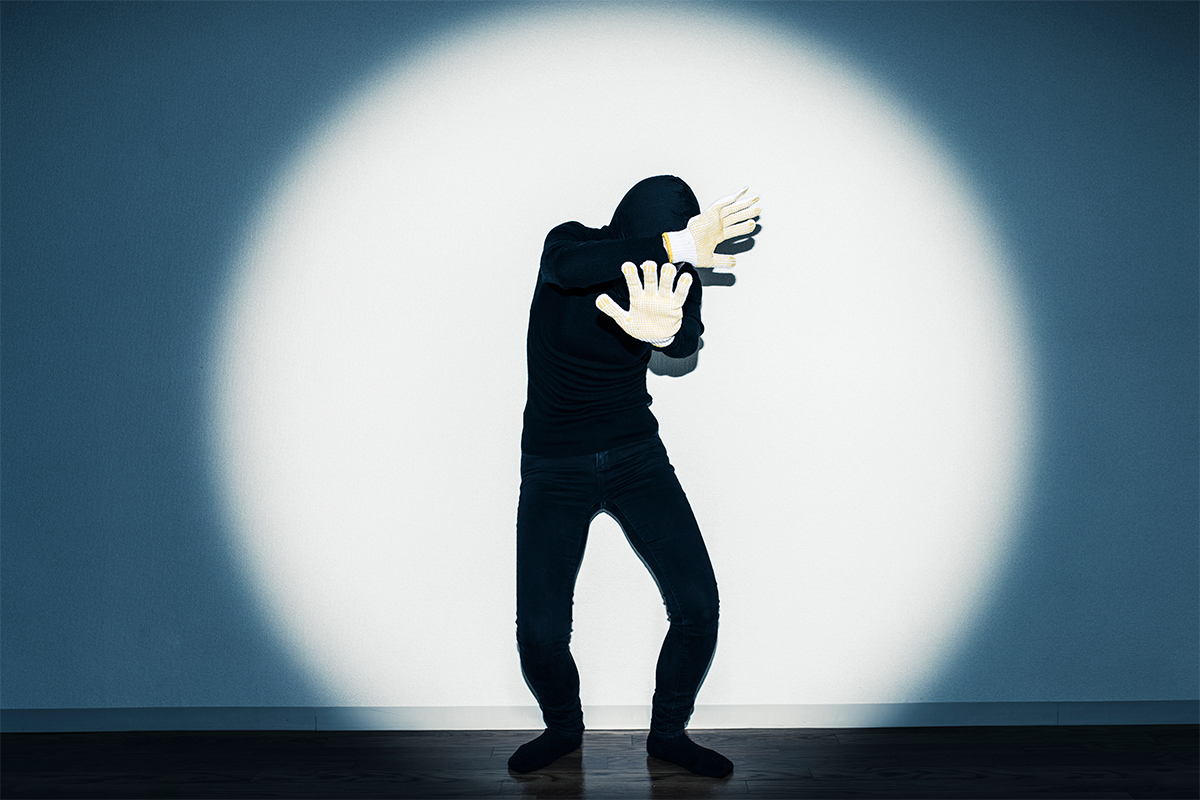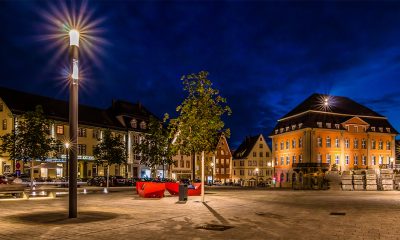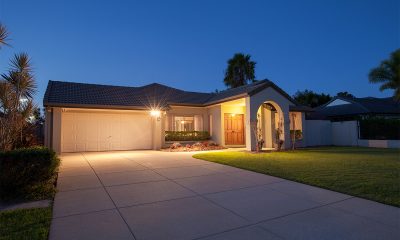What is an outdoor security light
An outdoor security light is a security element designed to create a perception of a reasonably secure environment, perform as a visual deterrent to discourage unauthorized entry, facilitate the detection of intruder motion, and make other security elements more effective during hours of darkness. When security is an issue, lighting often deserves consideration and integration into a security plan because it defines the security zone in a dark environment and can perform any or all of the following functions: enhancing observation, reducing shadows that could offer concealment, psychologically deterring intruder ingress, and heightening the effectiveness of video surveillance camera systems.
The use of security lights is the cost-effective way to add an extra layer of protection and safety to residential, commercial, industrial and institutional environments such as single-family and duplex residences, retail complexes, office buildings, hotels, restaurants, art galleries, museums, warehouses, and banks. Outdoor security lights are installed to illuminate primary points of entry to a building and the areas around these entrances. They are mounted on walls and under building eaves to illuminate doorways, garage entrances, building perimeters and vulnerable access points.
Security lighting requirements
Security lighting can stand in its own right creating effective zones of protection and providing deterrence against intruders. It can also be integrated into a security system to work in unison with intrusion detection systems. Outdoor security lights should provide sufficient illumination to ensure a clear view of the security zone at a distance and allow for facial recognition of the intruders and visitors with security cameras and on-site property owners or security personnel.
The IES stipulates that the minimum vertical illuminance for security lighting at exterior doorways should be no less than 11 lx (1 fc), measured 1.5 m (5 ft) above the doorway threshold or at the midpoint elevation of the viewing device or door window. Security lighting should also permit facial recognition at a distance of at least 9.1 m (30 ft). The horizontal illuminance uniformity ratio should not exceed 6:1 average-to-minimum. An average maintained horizontal illuminance of at least 32 lx (3 fc) should be provided, with a uniformity ratio not exceeding 4:1 average-to-minimum.
In applications where accurate perception of object color is important, white light sources with a minimum color rendering index (CRI) of 80 should be used. Most security lighting applications use a light source with its correlated color temperature (CCT) greater than 4000 K. This level of coolness usually corresponds to a higher psychological impact, better mesopic vision due to the high scotopic/photopic (S/P) ratio, and a high light source efficacy.
Motion activation
Security elements can be active or passive deterrents. Security lighting is normally passive in nature because it does not interact with a would-be intruder. However, motion sensor operated lighting is an exception to this rule. Motion sensors are used to change the state of a security light upon detection of motion. This change of state might be to turn on a light or change the light from a dimmed state to a fully on state. A sudden burst of light can create fear in the mind of the would-be criminal and perception of being identifiable. Security lighting controlled by motion sensors thus has a considerable value as a psychological deterrent to intruders.
Outdoor security lights typically use passive infrared (PIR) technology to detect motion. A PIR sensor detects changes in the amount of infrared radiation in its field of view and converts this change into a voltage. When the changes in the detection zone of the sensor result in a voltage that exceeds an established threshold, an internal microprocessor will connect the load to the supply or increase the lighting load for full intensity illumination. PIR sensors require very little power due to their passive nature and are small, inexpensive, easy to use and relatively immune to false activation (tripping) of lights, which makes PIR sensors the preferred sensor technology for wireless occupancy detection. PIR sensors require direct line of sight and must be carefully positioned to maximize the zone of detection. These sensors have a full body detection range of up to 12 m (40 ft). PIR sensors may not be suitable for use in exterior applications where the field of view can be easily blocked or a large detection range is needed.
Microwave sensors can be used to address the ineffectiveness of PIR sensors. A microwave sensor is an active motion detector which senses movement in a space by transmitting high frequency electromagnetic waves. High frequency electromagnetic waves can penetrate certain physical barriers. This feature offers microwave sensors a big advantage over PIR sensors which require a line of sight to function correctly. Microwave sensors have a detection ranges several times that of PIR sensors.
Lighting technology
At the forefront of advancements in security lighting is solid state lighting based on light emitting diode (LED) technology. LEDs produce visible white light through recombination of charge carriers (electrons and holes) in the MQW active region of the diode and the subsequent wavelength conversion within the semiconductor package. With the use of LED technology, the prospects of what can be done for security protection with lighting have expanded tremendously. The high power conversion efficiency of LEDs not only cuts energy costs but also affords security lighting the possibility to run on battery power or solar photovoltaic systems.
Unlike fluorescent and high-intensity discharge (HID) sources which have reduced lifespan under the stress of high frequency switching operation and are restricted in their dimming capabilities, the light output of LEDs can be controlled in a very dynamic way without appreciably affecting the source life. LEDs are instant on, endure constant switching, and can be dimmed from 100% to less than 1% light output. These capabilities make LED lighting functionally friendly with automatic switching strategies which can maximize the effectiveness of security lighting and the efficiency of energy use. Other advantages that would be difficult to find in the predecessors of LEDs include long service life, spectral tunability, high optical delivery efficiency, lighting design flexibility, and solid state construction.
System design of LED security lights
LED security lights are commonly designed as integrated lighting systems that incorporate all components in a single assembly and use LED packages, rather than LED light bulbs, as the source of light. Integrated design can produce new form factors for improved optical control, thermal management and visual appeal from unique designs. LED security lights can take various forms, including wall sconces, floodlights, two-light systems, pod lights, and light panels. The adjustable light heads projects 500 to 5,000 lumens brilliant light across a radius of up to 270 degrees, with light distributions ranging from spot patterns for detecting object far down the field to wide flood beams for viewing across wide areas.
In addition to motion sensors, other types of automatic controls including time-based controls and dusk-to-dawn photocells are often used to optimize energy use. The various automatic controls can operate individually or work in unison to reduce false triggers. LED security lights can be designed to run on AC line power or battery power. Battery-operated lights are mostly solar powered systems although self-contained systems that use only high energy density rechargeable batteries are also viable solutions. Solar security lights may integrate the solar panel into the luminaire or use a remote solar panel.
Load regulation and control
The performance, reliability and functionality of the LED driver should be taken into serious consideration. The LED driver is a constant current power supply that serves to provide a well-regulated DC current to the LEDs regardless of operating conditions (i.e., changes in the supply voltage or LED forward voltage). The intensity of the light is dimmed with a compatible driver that can perform constant-current reduction (CCR) or pulse-width modulation (PWM). The LED driver is configured to accept control input through an interface (e.g., 0-10V DC, Bluetooth, ZigBee, or Wi-Fi) and control the lighting load in response to sensors, control logic circuits, smart home systems, or IP-capable control devices such as smartphones, tablets or PCs.
Defense against environmental influences
Outdoor security lights are sealed to ingress protection rating suitable to the exterior environments. When the luminaire is installed in locations where exposure to rain and water occurs frequently, an IP65 rating or higher is needed. It is always necessary to exercise control of environmental conditions to protect optical chamber against the ingress of liquid, dust, dirt and other contaminants in order to avoid accelerated lumen depreciation and premature LED failures.



















Loading...